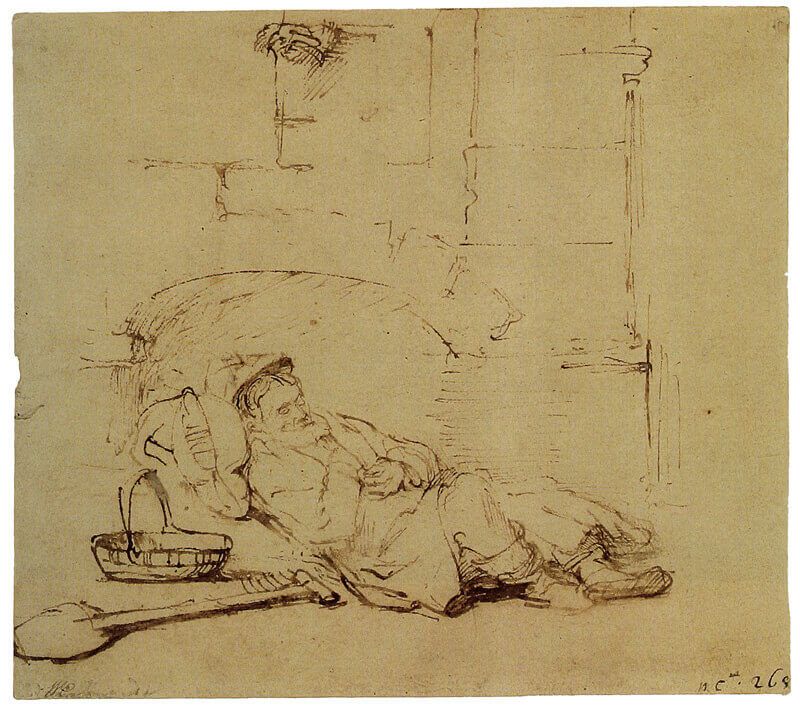Tobit Asleep, 1650 by Rembrandt

In 1964, Julius Held published an important study of Rembrandt and the Book of Tobit that has been of fundamental inspiration to the present work.36 Although it is among the shortest of the apocryphal books of the Old Testament, Held noted that Rembrandt had a lifelong interest in the story of Tobit, devoting more than fifty-five works in painting, etching and drawing to nearly every episode in this consoling tale. While this number would be radically reduced today, in the light of recent connoisseurship of the artist's paintings and drawings, there can be no disputing Rembrandt's attraction to the story of Tobit.
Tobit is a pious, elderly Jew living in Nineveh after the kingdom of Israel had been invaded by the Assyrians. Once rich, he has lost his fortune and now lives humbly with his wife, Anna, and son, Tobias. Even in exile, he continues to follow his religion and, when one day told by his son of a slain man lying in the street, he dutifully buries the corpse at sundown. Tired from his exertions, he lies down to sleep by a wall, and during the night excrement from a sparrow's nest falls on his eyes, blinding him. This episode in the tale is the subject of a drawing Tobit Asleep by Rembrandt of around 1650.




















